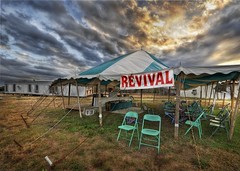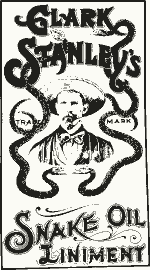 There is no depth to the philosophy behnd the mission of the TSA... just a shallow defense that whatever they do must be right because there have been 'no successful domestic attacks' since 2001. That's a weak foundation that will crumble when something, inevitably perhaps, does slip through the cracks.
There is no depth to the philosophy behnd the mission of the TSA... just a shallow defense that whatever they do must be right because there have been 'no successful domestic attacks' since 2001. That's a weak foundation that will crumble when something, inevitably perhaps, does slip through the cracks. Thoughts on marketing, technology, start-ups, new product launch, branding, leadership and more from Jim Gardner of Strategy180. Find out more at www.strategy180.com Because Results Matter.
Sunday, December 19, 2010
Top 10 Branding Miscues of 2010... and three more.
 There is no depth to the philosophy behnd the mission of the TSA... just a shallow defense that whatever they do must be right because there have been 'no successful domestic attacks' since 2001. That's a weak foundation that will crumble when something, inevitably perhaps, does slip through the cracks.
There is no depth to the philosophy behnd the mission of the TSA... just a shallow defense that whatever they do must be right because there have been 'no successful domestic attacks' since 2001. That's a weak foundation that will crumble when something, inevitably perhaps, does slip through the cracks. Thursday, November 18, 2010
The New, New Frugality.
 Besides the suggestions I laid out in the earlier post on frugality among consumers, the latest Booz report reminds me that as more marketers get on the bandwagon of frugality, marketing messages and product development, even merchandising and certainly pricing strategy will again equivocate as all marketers take such positioning and make it so much table stakes. So for my client and others like them who applied a value message as a key brand value, it becomes less and less of an effective differentiator.
Besides the suggestions I laid out in the earlier post on frugality among consumers, the latest Booz report reminds me that as more marketers get on the bandwagon of frugality, marketing messages and product development, even merchandising and certainly pricing strategy will again equivocate as all marketers take such positioning and make it so much table stakes. So for my client and others like them who applied a value message as a key brand value, it becomes less and less of an effective differentiator.Note that the New Frugality doesn't mean that everyone is looking for the lowest price, or even the best value. What it does mean is that consumers - including businesses - are looking for reasons to defend the purchases they do make, whether to colleagues, bosses... or themselves.
As marketers, that's the job New Frugality requires of us. Defending our brand and its market positioning. Just like the good ol' days. Again.
Friday, October 22, 2010
Can I hear an Amen?
Yeah, well, I'm not excited either. And I write this stuff.



So who is excited? Who is so danged fired up that they'd get dressed to the nines and go door to door during their free time to talk to desperate housewives? Who's so convinced of the value of their product that they'd tote their entire families and a forest worth of pamphlets with them to be certain everyone had a chance to share their enthusiasm, including their kids? Who's so completely convinced of the superiority of their value statement that they'd give up everything to take two years to do nothing but sell, sell, sell?
 Girl Scouts, Jehovah's Witnesses, and Mormon Missionaries, respectively.
Girl Scouts, Jehovah's Witnesses, and Mormon Missionaries, respectively.For me I marvel at their commitment even as I brush them off. (I am a salty snack favoring Methodist so thanks, but I'm covered.) When was the last time you encountered a salesperson at your company with the earnestness of a Girl Scout, the persistence of a Witness, or the commitment of a Mormon? Before you complain, maybe you should start with a mirror.
I understand that in technology sales as in other industries, we aren't talking about salvation and deep set belief systems. But that's the point, right? Perhaps we need to approach sales enablement with the fervor of a Chautauqua preacher converting the heathen masses. When was the last time YOU got excited the latest version of software or throughput on a server? And if not, why not?
As you prepare to talk to salespeople about a new product, service, or feature, first answer for them the question they must answer all the time: "Who are you and why should I care?" If you can't answer that with the enthusiasm of an itinerant preacher, you can't expect it from your congregation of salespeople, either.
Even if you threaten their eternal soul.
Thursday, September 23, 2010
Deja vu all over again
- "...it’s clear that in the age of social media, a company can’t spin and rebrand its way out of a mess like it used to."
- "...it's what companies do, not what they say, that really matters."
- "...BP is an example of how companies' misfortunes are going to unfold going forward with all the tools and weapons the Internet and social media afford."
- "Companies screw themselves when they let perception get ahead
 of reality..."
of reality..."
Saturday, September 18, 2010
A Shot of Convenience

I got my annual flu shot today. It is only September and I live in a warm climate, so it’s usually approaching November before the local news guilts me into making a trip for the vaccine. They do this of course by warning me repeatedly of the pandemic cataclysm sure to occur if I alone remain the diseased zombie carrier of the latest flu strain named for a farm animal or obscure Asian nation.
Today, however, it was different. With my wife and son hunkered over his History homework, I myself made the weekly trek to our local hated and feared Wal-Mart to pick up a few staples. And there it was, near where I had twice exchanged my cart for one without a thumping or rebellious wheel: The Wal-Mart equivalent of the Mayo Clinic… a makeshift card table, folding chair, forms, syringes, gloves, and two disinterested phlebotomists. They were sandwiched in-between brightly colored plastic back-to-school dorm room accessories and the latest in Jacqueline Smith Signature sweatpants in size XXXL.
As I sat down to fill out the medical form, a small gnat flew between us. “That’s a bit disconcerting,” I mumbled.
Resignedly, the woman filling the syringe sighed, “It’s Wal-Mart.” We nodded silent acknowledgments and I rolled up my sleeve.
So why would I consider Wal-Mart, a discount mecca and focus of great derision by wanna-be cultural elites like myself, for a flu shot requiring sterile surrounds and capable professionals?
Because it was easy. The location was central, required no appointment, no long forms, no insurance hassles (though it was an option); the line was short, the procedure even shorter, and payment a breeze. I got a flu shot and they pulled in 24 dollars in less than a minute. That’s a win-win.
So it is with marketing. If in real estate, its location, location, location, in marketing, its easy, easy, easy. People will pay for convenience. A lot more. We routinely pay a 5000% + mark-up on tap water just for the convenience of a bottle. We’ll exchange good nutrition for the convenience of a drive-through window. And your last oil change involved $6 worth of oil but $20 worth of ‘high school kid with a grease gun’.
If you have an inferior or more expensive product, making it convenient to buy and to use still gives you a shot at success.
And speaking of shots, go get yours today. I hear rumors of a ferocious Tajikistani goat flu this season.
Monday, September 06, 2010
Twitter Quitter
I deleted my posts, all 1500+ of them, shared over the past two years or so. Some were moving, insightful. Most were fun. None were ever drivel. No one ever knew what I had for breakfast, I never foursquare’d myself into a virtual mayoral coup d’tat, no one knew when I was ill, and only occasionally did I mention the weather. I even gained a friend or two.
I just got tired.

I initially joined Twitter and other social media to remain up to date on the social media communities important to my clients. I even joined MySpace back in the day – closed the account when it became irrelevant to me.
I like to write, and Twitter and Facebook are good virtual water coolers for office at home types like myself. But they are an extension of me, that is, my personal brand, and before every tweet I’d have to consider that. That can be tiring, particularly for someone such as myself, given to dark humor and sarcasm – 140 characters is plenty of room for a zinger, but never enough for context.
So I’m not dropping out in some Luddite fantasy, I’m just lightening my load a bit. I can be distracted and Twitter is nothing if not a distraction. It was one more thing that took my time from things that were clearly more constructive, useful, profitable, enjoyable, important. Like all good business decisions when faced with limited resources (in this case, time) I had to determine if it was core to my business or life, and if I could justify the continued investment in it. The answer was clearly, no. It was not core, and there are other, arguably better ways to market myself and my ideas, and interact with others.
So my Twitter account is inactive. Of course, I’ll stay in touch, though my number of followers will undoubtedly fall sharply in the coming weeks (another invented preoccupation I'll not miss). I’ll follow the Twittersphere for news on how to leverage Twitter in marketing, and from time to time check on tweets from those I follow who continue to leverage Twitter expertly. The end of this relationship is amicable. I can tell you about Twitter. I can help you create a presence on Twitter. I can now see commercial purposes for Twitter I couldn’t see just a few months ago.
But for now, I’ll just be observing.
Friday, August 13, 2010
Purpose over Process
 One of my favorite quotes about articulating and pursuing goals is from climber and author Todd Skinner: “To stick to the plan instead of the summit can make you fail to climb the mountain.”
One of my favorite quotes about articulating and pursuing goals is from climber and author Todd Skinner: “To stick to the plan instead of the summit can make you fail to climb the mountain.”In marketing as in mountaineering, being able to separate the purpose of our actions from the process of our actions is imperative for success. As marketing has wisely moved increasingly toward using analytics to quantify its contribution to the organization, often we can get caught up in the analysis over the objective. It isn’t enough to celebrate the sales directly correlated to a promotion, or the movement of a new product’s valuation from an analyst review following a presentation. These are useful metrics and benchmarks, not the overall objective.
Instead it is important to recognize how those results impact broader corporate goals. The clear articulation of easily understood goals is critical not only in gaining support for your actions, but in identifying when those actions deviate from the intended effect so corrective action can be swift.
The objective is a constant, so be careful that you do not use numbers to defend your actions, but rather to define them. You want to clearly articulate and get support toward the shared organizational objective, not the steps in the process.
No one ever asked Sir Edmund Hillary how many steps he took to reach the summit of Everest.
Sunday, August 01, 2010
The Oldest Profession
 In this excellent Advertising Age op-ed by Les Marguiles, he addresses the critical importance of the agency-client relationship, or increasingly, the lack of one.
In this excellent Advertising Age op-ed by Les Marguiles, he addresses the critical importance of the agency-client relationship, or increasingly, the lack of one.
Conversely, and importantly, those service providers – agencies, consultants, what have you – who accept that their work can be commoditized and are therefore willing to forego basic standards of quality of service, creative, and responsiveness also deserve what they get from clients who take that unique value for granted.
I remind my small agency colleagues of the following exchange, often attributed to Winston Churchill:
Churchill: Madam, would you sleep with me for five million pounds?
Socialite: My goodness, Mr. Churchill… Well, I suppose… we would have to discuss terms, of course…
Churchill: Would you sleep with me for five pounds?
Socialite: Mr. Churchill, what kind of woman do you think I am?!
Churchill: Madam, we’ve already established that. Now we are just negotiating the price.
Tuesday, July 20, 2010
Why you need to be .co dependent
Right after you finish reading this blog entry, go to your domain host and purchase your company's URL ‘.co’ domain.
As of today, you can register .co just as you have .com, .net, or .org, and other more obscure ones, such as .me or .name
It will cost you under $30/year but save you headaches. I predict .co will be a popular domain because: a, outside the US, web users already are used to typing .co prior to their country code (eg, .co.uk, for the Brits, .co.nz for the Kiwis); b, it’s a letter short of .com, which is great for typo trolling sites, and of course, c, in the states, it is a suffix for legal companies.
Yes, I might be wrong about the eventual land rush for the .co domain. If so, you’re out $30. If I’m right, you could pay thousands later. I say that’s pretty good insurance.
That’s it. Just this timely advice. No snarky comments, no opinion, no sermonizing. Mostly because I can't, off hand, come up with a good pun using '.co'. If you have one, post it in the comments (the .co mments).
Thursday, July 08, 2010
Why?
“Why?”
Because even an inquisitive toddler knows that asking “Why?” repeatedly is a great way to get to the answer. Not just AN answer. THE answer. There is even a rule of thumb in Six Sigma circles involving the “Five Whys”. It is a Six Sigma tool that doesn't involve statistical hypotheses… and so can be completed without complicated Minitab calculations. Asking “Why?” repeatedly can quickly drill down to the core of a problem saving time by focusing on causes, not just symptoms.
“Why?”
Because in marketing, as in manufacturing, solutions are often not as simple as they may seem initially. There are now layers upon layers of tightly woven inter-related initiatives that build brands and drive leads.
“Why?”
Because marketing today isn’t as linear as it once was. Since 2000, marketing has become increasingly segmented, specialized, and multi-directional. Information is accessible anytime, from a multitude of sources, both positive and negative.
“Why?”
Because technology, namely the Internet, Social Media, Dashboard software, and Web 2.0 have both created new, responsive interactive channels and revealed new ways to measure old (mass media) channels that make marketing far more quantifiable, measurable, accountable and effective than ever before... and marketing needs to embrace this paradigm.
“Why?”
Because if marketing ever wants a seat in the boardroom and to assume its rightful place in setting strategy for the organization, it will need to not only know the right answers, but be sure it is asking the right questions.
Friday, June 25, 2010
The Art of the Apology
 Like a lot of people, I have been following the Gulf oil spill... and the related apologies - from BP, from the regulatory agencies, from Tony Hayward and other executives, and the list goes on. And it is not only the oil spill. Recently I've heard apologies from General McChrystal, Val Kilmer, Dave Weigel, JD Hayworth, Akio Toyoda, Joe Barton, Subway Sandwiches... oh hell, just Google "apologizes" and see what I mean.
Like a lot of people, I have been following the Gulf oil spill... and the related apologies - from BP, from the regulatory agencies, from Tony Hayward and other executives, and the list goes on. And it is not only the oil spill. Recently I've heard apologies from General McChrystal, Val Kilmer, Dave Weigel, JD Hayworth, Akio Toyoda, Joe Barton, Subway Sandwiches... oh hell, just Google "apologizes" and see what I mean.So here it is folks, a marketer's guide to spin contr- er, apologies. I hope you’ll never need it.
- You are sorry. A brief statement to open the apology that states the offense and expresses remorse and modesty. Shame is also useful if addressing issues of moral turpitude. Express interest in regaining trust/keeping customers.
- You know what you did. A paragraph dedicated to a complete, albeit brief, restatement of the event or behavior.
- You are responsible. Capitulate to your role in the incident and shift no blame, even if in fact it was shared. Your audience, not you, will assign blame among multiple parties. Acknowledge the injury done to effected parties.
- You won't do it again. Detail your commitment to change and show customers/the public the actions you are taking to ensure that this type of situation will not happen again. (This is where celebrities announce their intention to go to rehab.)
- You'll 'do the time'. If appropriate, offer details on information on restitution and compensation.
Saturday, June 05, 2010
How to BP (Be Proactive) helping gulf restoration
 This is, of course, ostensibly a marketing blog, so my thoughts and comments thus far (my last blog post, in fact) have focused on the PR/brand implications of BP’s pathetic PR response to the Deepwater Horizon disaster. (Since I posted that blog entry last week nothing has changed. In fact a few days ago, BP’s CEO Tony Hayward hit a new low by saying that he “…wants this to be over so I can get my life back…” as if he was more impacted by the disaster than the eleven men killed in the explosion and the thousands of gulf residents who have subsequently seen the destruction of their livelihoods.) It’s taken a little time for it to come ashore, but on Friday Pensacola, Florida residents saw the first tar balls wash up on shore, and of course Louisiana – and their state bird, the once – and now once again – endangered Brown Pelican, have been effected the worst.
This is, of course, ostensibly a marketing blog, so my thoughts and comments thus far (my last blog post, in fact) have focused on the PR/brand implications of BP’s pathetic PR response to the Deepwater Horizon disaster. (Since I posted that blog entry last week nothing has changed. In fact a few days ago, BP’s CEO Tony Hayward hit a new low by saying that he “…wants this to be over so I can get my life back…” as if he was more impacted by the disaster than the eleven men killed in the explosion and the thousands of gulf residents who have subsequently seen the destruction of their livelihoods.) It’s taken a little time for it to come ashore, but on Friday Pensacola, Florida residents saw the first tar balls wash up on shore, and of course Louisiana – and their state bird, the once – and now once again – endangered Brown Pelican, have been effected the worst.PR aside, at some point we have to step in where BP's platitudes do not. However, not all of us can race to the gulf to wash birds with Dove detergent, but alternatively, here are a few links that will accept your donations:
• Adopt a pelican International Bird Rescue Research Center (IBRRC)
• Donate to gulf restoration through the NWF (National Wildlife Federation)
• Help fishermen and the Louisiana seafood industry via protect our coastline.org: Also donate by texting ‘gulf’ to 77007
Oh, and one last thing: In spite of media coverage to the contrary, no one wants your hair: So you can keep your locks, Repunzel.
Tuesday, June 01, 2010
BP media mis-steps: Incompetent PR or arrogant leadership?
The spill in the Gulf is now the largest ecological disaster ever in the United States. (BP needs to thank the gross incompetence that led to the tragedies and human toll at Bhopal and Chernobyl for keeping them off the top of the ‘worldwide’ list. For now.) So let us consider for a moment what it must be like at BP headquarters:
Consider the boardroom dialogue at HQ that allowed BP CEO Tony Hayward to say to a UK newspaper that “The Gulf of Mexico is a very big ocean. The amount of volume of oil and dispersant we are putting into it is tiny in relation to the total water volume.”
What of the urgent meetings among top executives that ended with the suggestion that BP stick to initial estimates of 1,000 barrels per day of leaking oil, when many independent experts were saying up to 20,000? Did they think the public – including experts in flow measurement – weren’t ever going to find out?
What of the casual water cooler conversations between cubicles where idiotic comments that the company “doesn’t know how birds and marine life have died” were allowed to be shared – and then implicitly encourage public opinion pieces about how the wildlife damage is minimal – “only being a little oil on a couple bird’s wings”.
Not to mention apparently very little comment regarding the eleven men who lost their lives when the platform exploded. (The media is complicit in their attention to the ‘pipe cam” over the human toll.)
There are more examples. Many, many more, as the list of mis-steps is as long as the oil slick is wide. But can we blame the PR team? Well, insomuch as an OIL COMPANY apparently had no, or a poor, or not agreed upon, disaster response process in place, yes. But even at that, it is often the corporate executives, regularly relegating PR (and marketing) to the back of the bus and out of the boardroom, that are likely to blame here. Instead of allowing these critical communication professionals to help manage the disaster communications, designate executive spokespeople, and align messages, BP simply sent employees a reminder of the Non-Disclosure Agreements in their contracts and then continued blathering unbelievable statements like a five-year-old caught with their hand in the cookie jar.
Until the disaster, the BP marketing and public relations team was doing an excellent job redefining BP (which holds the worst safety record in the industry), as a leader in eco-friendly oil production and alternative energy. But corporate PR can only do so much. Eventually, words must be backed with action if a brand makeover is to ‘stick’.
Even at BP, I suspect their PR professionals understand this. Unfortunately, their executives never have.
Friday, May 07, 2010
"Plan", as a verb.
"But that's a building!"
"You missed your turn. Please make a u-turn as soon as it is safe to do so."
"But I'm in an alleyway!"
So, a couple years ago, I was visiting New York with my family, showing them my old haunts and taking in a game at the old Yankee Stadium. I opted to get a GPS unit from the car rental company because I knew that the roads had changed in the years that had passed since I last drove Long Island's Northern State Parkway.
Unfortunately, when on her very first assignment the lovely voice of the GPS unit directed me to a condo development in Queens instead of a hotel in Lindenhurst, it quickly became evident that things had changed since she'd last been calibrated. It wasn't long before I stopped referring to the chronically incorrect voice in the bright yellow sack as the family-friendly 'lemon lady', and opted instead for the far more colorful 'b*tch in the bag'. After the second day, we stowed the painfully out-of-date navigation unit in the trunk.
Are your business plan documents like that confused guidance system? Is your business planning process useful in navigating toward your goals or is it an annual process that is more routine habit than useful tool? If you are creating it once and then not updating it regularly to respond to changes that occur in the market, then what you created wasn't a tool, but a paperweight. Too often businesses large and small will smartly discuss goals, create a plan, normalize it across functional areas, print it out in color on glossy paper, put it into custom binders, and then put it on the shelf to be updated the next year when it is pulled down, dusted, and updated.
That approach only works for holiday decor.
So, sanity check: We are now halfway through the second calendar quarter, and have you even looked at your annual plan? Have you evaluated the assumptions and how they've played out? Did your competitors introduce new products, services, distribution? Did you or they change pricing strategy, pursue M&A or new partnerships? Is the same team in place? Did you hire someone for their experience and expertise and then quietly encourage them to follow a plan to which they did not contribute, wasting their insight? Did the market change? The environment? Did taxes increase? Were new products and versions and functions and services added precisely on schedule as outlined in the assumptions in the plan?
The plan document is not the objective of the planning process, any more than drawing a map is the purpose of a holiday. Planning documents are useful tools in guiding strategy and providing touch-points - so that even if the signs on the street change, you can still guide the organization to its destination.
Focusing on the map instead of your destination is a sure way to get- and stay - lost.
Sunday, April 18, 2010
10 Steps to an Ineffective Marketing Plan
- Wait. Eventually priorities will change, opportunities fade, deadlines pass, and your choices will dwindle making analysis of them easier.
- Evaluate sunk costs and resources as if they are equally as important as to those required going forward.
- Analyze and segment data until it is unrelateable to the original objective.
- Test, iterate, re-test, and reiterate until your brand, messaging and communications are thoroughly inconsistent.
- Apply book learning to the exclusion of real-world knowledge and experience.
- Apply real world knowledge and experience to the exclusion of book learning.
- Budget based on past sales data.
- Use an off-the-shelf, "marketing plan in a minute" template.
- Exclude new ideas because they come from outside your industry.
- Apply any idea because you heard (insert guru of the day here) say it at a conference.
What are your experiences? What would you add to this list?
Friday, April 09, 2010
I'd rather fight than switch.

Like the BBD&O Tareyton cigarette ads of years past illustrated ("Us Tareyton smokers would rather fight than switch"), most companies rely on brand loyalty to drive sales of their products among loyalists. Investing in initiatives to build this loyalty is the most effective means of creating easy recurring revenue and lowering costs while gaining share. Yet every day, consumers do change their habits - sometimes temporarily in response to a low price, sometimes permanently when a new product is proven superior. The objective for new product managers is to encourage first use - the first trial of a product among target consumers - in order to create a wedge between their buying preferences (or habits) and a new alternative.
CPG (Consumer Packaged Goods) manufacturers are particularly involved in a this daily battle, often times a battle between brand managers in the same company (P&G, for example, regarding dish soap).
In a new report from the Grocery Manufacturers Association (GMA), Booz & Co. and SheSpeaks, Shopper Marketing 3.0: Unleashing the Next Wave of Value, the authors state three critical weaknesses in the current battle brand strategies - all carry a similar theme, that is, too much concern regarding out-of-store promotion and a disregard for where 59% of purchase decisions are made - in store (pricing, shelf placement, and product packaging). While in-store promotion, pricing and packaging isn't sexy, it is effective. Marketers are often easily distracted by the excitement of promotional activity and the dynamics of mass-market tools, clever use of new media, and the like, but as I've stated before, the marketing function should be, arguably, less than 25% promotion. This report underscores that for CPG - but it can apply to B2B as well - that price, product and placement are very critical factors, particularly the latter when in-store displays, packaging, and 'shelf talkers' (shelf signage) are so very influential to shoppers - 77% of whom do not shop with a list, much less carry a hardened loyalty to a specific brand.
For me, once again this is a reminder that the critical value of marketing lies outside the clever graphics and innovative viral games. While still important, it is actually the pricing, product positioning, and placement that combined with promotion makes the needle move. Marketing must embrace more than promotion - and then measure and use analytic tools if they are ever going to be seen as equal professionals in the boardroom.
And that's a switch worth the fight.
Sunday, March 21, 2010
Marketing in the age of frugality
In the article "The New Consumer Frugality," by Egol/Clyde/Rangan from strategy+business magazine, the authors restate and expand opinions I made in earlier posts, including Fear and the American Consumer, wherein I supposed a world where fear, uncertainty and doubt (FUD) was the primary motivation of consumers and again in this post, where I suggested that there was a new normal of a higher savings rate, less consumer spending on credit, and general 'new religion' on main street.
The authors state that according to a Booz and Company study, fewer than 20% of consumers will return to their pre-recession spending levels. (It's nice to be right.)
The authors state: "A new frugality, characterized by a strong value consciousness that dictates trade-offs in price, brand, and convenience, has become the dominant mind-set among consumers in the United States — and probably in other wealthy countries as well. Two-thirds of American shoppers are cutting coupons more frequently, buying low price over convenience, and emphasizing saving over spending. Per capita consumption expenditure has declined across demographic groups. Consumer sentiment remains weak. These trends are not going to change, no matter the pace of economic change."
Then again, given that more than half this country's GDP is consumer spending, it'd be good to be wrong in this instance.
Still, what does this New Frugality mean for marketers?
Repeating a mantra of marketers weathering each recession, the authors state that we should continue aggressive marketing in a recession - but that unlike earlier times, that the return to 'better days' will not be marked by a return to normal strategies in product, pricing, promotions or distribution. The increased emphasis on, and redefinition of, value (defined as a combination of price, brand, and convenience) will drive decisions across all consumer groups - and this, combined with the community and transparency brought about by the rise of Web 2.0 means that credibility and performance will be paramount to consumers; views of this value judgment less impacted by status positioning and clever brand advertising than by collective market experience. And while brand awareness and loyalty are proven out by the experience, the post-recession consumer will seek out distribution channels that offer the best measure of that brand combined with price and convenience.
So two main lessons of the quoted study involve pricing strategy and promotions strategy: When looking for pricing solutions, the identification and segmentation of customers is, as one might expect, paramount. Price only to maintain profitable return on the most loyal customer segment where value continues to be perceived. As I stated last December, consider pricing strategies and tiers for various channels to deliver the best value as judged by each segment using different channels.
The second lesson involves MarCom. Develop promotional strategies that articulate the convenience (in distribution), pricing tiers and brand selection at all consumer/brand touch points. As the authors remind us, this will require marketers to embrace new advertising and promotion capabilities, particularly those around new digital tools that engage consumers at all points in the buying decision and encourage desired purchasing behavior.
The New Frugality is more than a new economic normal. It is a sea change. We now find ourselves in the 'frugal age' - and it will define us as much as the digital, space, or industrial ages did before.
Thursday, March 11, 2010
The Cure For What Ails Ya?
I am seeing a lot of ads for – and an increasing number of small start-ups buying – crowd-sourced logo development, marketing plan builders, and social media starter kits touted as an inexpensive equivalent for professional guidance - and by extension, purposeful reflection and consideration on the part of business owners themselves.
I understand the appeal of these services. We are a society of the easy fix, the cheap alternative, a society where Wal-mart sets the expectation. Plus, much of marketing and advertising can appear on the surface as obvious and intuitive. (The reason for this is that generally, 'the obvious and intuitive' was created by marketers who created that perception from the complicated and obscure, but I digress.) Marketing, it then appears, is certainly not the province of supposed ‘experts’ – many of which by my own admittance, aren’t worth a tinker’s damn themselves.
Still, it is simple due diligence to find a consultant with whom you can feel confident. One that knows, or is committed to learning, your industry and your business. One that will take your lead but feels confident not to necessarily follow it. One with relevant experience that allows them to apply past experiences and ask the right questions.
The idea of selling ‘Mad Libs’ style pre-written marketing plans or picking a logo contest winner is worse than doing nothing at all: it is potentially destructive. It allows sloppy thinking, hides what might be an under-capitalization of the business, reinforces marketing as a support, and therefore, optional, function, and suggests that marketing’s end game is a document or advertisement, and not an ongoing process of communication with stakeholders.
Your business is unique. Can what you are selling be reduced to a document like an off-the-shelf lease agreement? If the communication with your customers can be reduced to being positioned like every other business that purchases your same ready-made document, then perhaps that’s all the differentiation that you can muster for your own product or service. And ultimately that’s another way these services are truly destructive, providing insufficient differentiation and discounting the real value of your product or service.
Snake oil remedies were touted as a cure for ‘what ails ya’, but were generally loaded with opiates that made the patient feel good for just long enough for the salesman to pack up his wagon and move on. If you are in business for the long haul, you’ll need a better prescription.
Tuesday, March 02, 2010
You don’t need marketing.
“No, we don’t need marketing. We need sales.”
“No, we don’t need marketing. We need more prospects to include us in RFPs.”
“No, we don’t need marketing. We need our customers to know how to use the product better.”
“No, we don’t need marketing. We need to attract better applicants for our open positions.”
“No, we don’t need marketing. We need our employees to understand what we stand for.”
“No, we don’t need marketing. We need to sales to understand our target customer.”
“No, we don’t need marketing. We need a bigger goal.”
True enough, people don’t need marketing. They need everything marketing provides.
So in a sense, you’re right. You don’t need marketing.
You need a miracle.
Tuesday, February 16, 2010
But wait... NOW how much would you pay?
Political commentary aside (as there are plenty of reasons to be cynical of any government spending program), the idea that the success or failure of a public policy is effectively the result of how well branded it is seems absurd on its face. Yet as much as we may agree or disagree on matters of public policy, policy itself is effectively one of the ‘products’ of government. As such, Americans judge policy as they do any product, and therefore attach a brand message to it. The question is whether that policy’s brand is accurate or well stewarded.
Consider the State of the Union Address as simply a product pitch. As amusing as it is to equate our Congressional Leadership to housewives listening to Vince Offer go on about the ShamWow, the analogy holds.
I mentioned in a much earlier post about renowned adman Roy Spence, who once suggested the establishment of a cabinet position of Secretary of Marketing – a position that, if successful, could replace all the others.
Don’t believe it?
Maybe you are familiar with the growing group of fiscal conservative activists now shaping the dominant political parties’ messages? No? Well, perhaps you know the Tea Party Movement. Perhaps you know about the group of suburban parents whose collective core values shaped the political races in 2000? No? Well, maybe you remember the Soccer Moms. What about that politically motivated community organizer who leveraged contacts in the Chicago political machine establishment to quickly climb the political ladder? He flipped that establishment background under a convincing brand of ‘Change’ and became our current President.
So, you want to change the world? Great! Just answer me the question I ask of all my clients… what’s your branding strategy?
![Reblog this post [with Zemanta]](http://img.zemanta.com/reblog_e.png?x-id=dc71510a-65f7-42db-b398-7a9fed19cb3d)
Saturday, January 16, 2010
Top 5 Things In Marketing I’d Like To See Change In 2010
- The exponential growth in Social Media 'experts'. You’re young, you’re plugged in, you’re mayor of a half-dozen Foursquare sites, and you’ve attended a keynote by Chris Brogan. This does not make you an expert. Having a Facebook page doesn’t make you an expert to anyone except your elderly great aunt. After all, I have a dog but this does not make me a veterinarian. (If you need a real SM expert, let me know. I can refer you to a great one.)
- Abandoned experiments in New Media. Whether it’s a blog, a Facebook page or a Twitter feed, the Web 2.0 landscape is as littered with abandoned efforts as Mount Everest is with abandoned oxygen bottles. Honestly, know what you are getting into. Bad, but improving, efforts are laudable. Abandoned efforts just create a mess of your brand.
- Hearing the same thing said more than twice. There is only one Seth Godin or Tom Peters. Chances are, they are not the only one who’s had the same thought, so it’s possible it’s been thought or articulated twice. But really, if you’ve read it already, rewording it doesn’t make it yours. Credit where credit’s due.
- Marketing used as a synonym for MarCom. Marketing professionals are responsible for allowing themselves to be limited to ‘prettying up’ PowerPoint slides. There are 4 Ps in McCarthy’s model, not just one. I’d like to see more marketing departments taking the lead on more than Promotion. Marketing needs to lead in Product, Placement and Pricing as well. And it has a lot to offer in the area of People and Purpose too.
- Fog over facts. There is no excuse to do anything in marketing that isn’t supporting a specific, measurable objective. If marketing professionals cannot quickly and confidently answer the question, “What is our specific objective with this initiative?” clearly and quickly if asked, then chances are it shouldn’t be done. And if no one is asking, that’s a problem in itself.
Saturday, January 02, 2010
Is That The Best You Can Do?
It’s a standard haggler’s phrase, and I’ve grown more comfortable asking the question as time wears on. It started when I was in Dubai several years ago, when, purchasing my wife some earrings at the hotel gift shop, the clerk asked, “You’re an American, yes?” When I replied in the affirmative, he told me he was going to give me an automatic 30% discount because he understands that “Americans don’t haggle.” It was reinforced a year or so later when my dentist, realizing that I’d recently hung a shingle and therefore had decided to forego dental coverage as a cost-saving measure, quickly volunteered to take 10% off the bill. “It’s not that we necessarily mark-up for insurance, but your cash helps.” Well, I got to thinking, if there are places that voluntarily negotiate even when I don’t; well then, I should try it more often.
So, as I’ve successfully negotiated, among other things, the cost of an airsoft rifle for my son at a flea market, the number (and necessity) of expensive tests with my physician, the price of a mattress at a retail store, and successfully argued data service charges with AT&T, my family is used to my asking the question when it comes time to save a little cash.
You should try it.
But what if you also applied the question “Is that the best you can do?” to all your business encounters? What better terms, better margins, better quality, better service, or better turnaround times could you expect? And moreover, what if you applied that question to your own proposals before issuing them? How much more competitive could you be? How much happier could you make your customers?
And what if we applied the question to ourselves, perhaps as a New Year’s resolution? Commit to asking it of yourself before succumbing to every possible weakness - and the question becomes a resolution that in itself could serve to help accomplish all the others. Think about it: reaching for a cigarette? A doughnut? Sleeping in, instead of working out?
“Is that the best you can do?”













![Reblog this post [with Zemanta]](http://img.zemanta.com/reblog_e.png?x-id=af1124a4-c289-4bab-b4f3-62461651715b)

![Reblog this post [with Zemanta]](http://img.zemanta.com/reblog_e.png?x-id=a316234f-ca90-440b-823c-fcaf130f4b6a)


![Reblog this post [with Zemanta]](http://img.zemanta.com/reblog_e.png?x-id=29c8dca5-8955-43c5-b47c-99a7a687332a)
![Reblog this post [with Zemanta]](http://img.zemanta.com/reblog_e.png?x-id=0bf447c8-9ceb-486d-9cae-cf18f003f71b)

![Reblog this post [with Zemanta]](http://img.zemanta.com/reblog_e.png?x-id=7bb12107-e9a6-46b6-9945-98f405d0eb51)

![Reblog this post [with Zemanta]](http://img.zemanta.com/reblog_e.png?x-id=3083dd6c-9dfb-467a-92f9-a2a1ac4d287a)

![Reblog this post [with Zemanta]](http://img.zemanta.com/reblog_e.png?x-id=8fa97e09-7268-4f2d-89ce-c4dd77115e5c)


![Reblog this post [with Zemanta]](http://img.zemanta.com/reblog_e.png?x-id=23024165-c518-47f2-983a-34ee97da1981)

![Reblog this post [with Zemanta]](http://img.zemanta.com/reblog_e.png?x-id=8cd9cc25-09e6-4982-8379-846bfe838bb7)